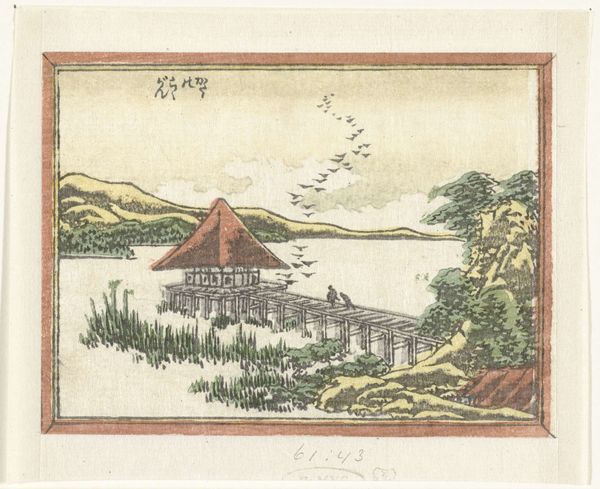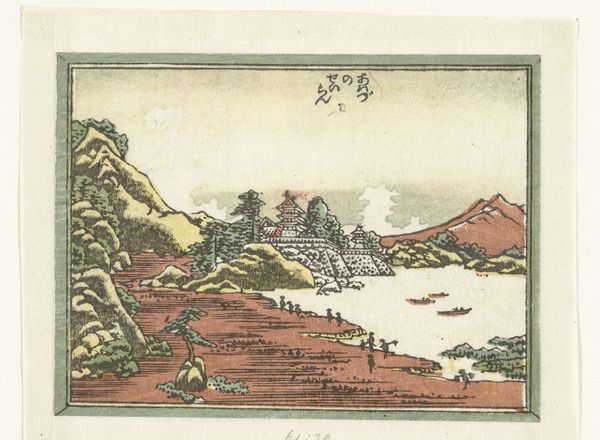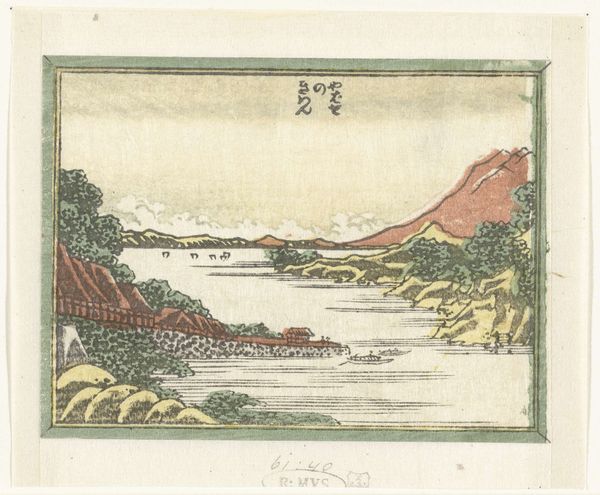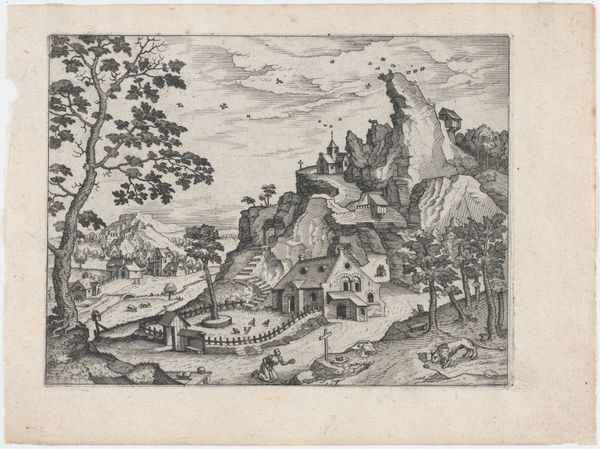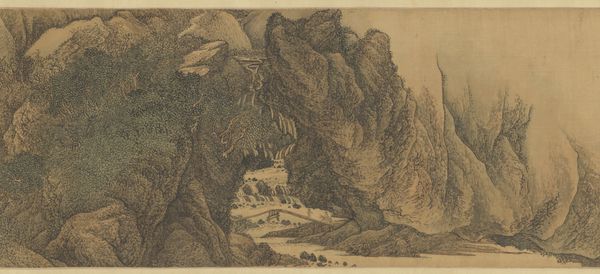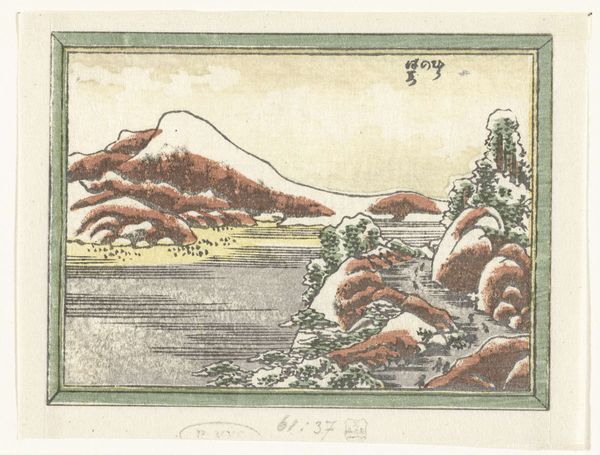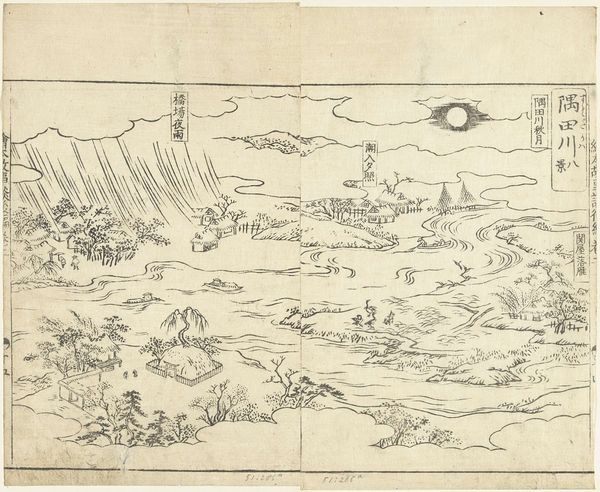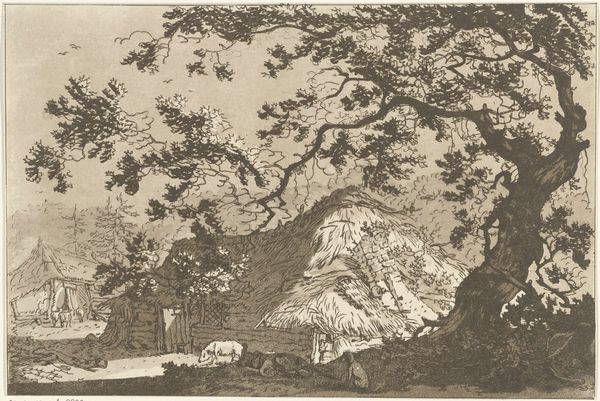
tempera, print, woodblock-print
#
tempera
# print
#
asian-art
#
landscape
#
ukiyo-e
#
woodblock-print
#
mountain
Dimensions: height 82 mm, width 111 mm
Copyright: Rijks Museum: Open Domain
Editor: So, this is “Herfstmaan bij Ishiyama” or “Autumn Moon at Ishiyama,” created between 1809 and 1814 by Katsushika Hokusai. It’s a woodblock print with tempera. I’m immediately struck by how the building on the mountain integrates with the landscape. What catches your eye? Curator: What's fascinating here is to consider the labor involved in the printmaking process. Think about the craftspeople who meticulously carved the woodblocks and applied the pigments, and consider how that shapes our experience. It also raises the question: does the commercial nature of ukiyo-e prints democratize art, or does it simply commodify aesthetics for consumption? Editor: That's a great question. The multiple impressions suggest accessibility, but doesn't the skill involved still make it somewhat exclusive? Curator: Exactly. The interplay between artistic vision and the means of production—the sourcing of materials, the division of labor—is key. Look at the texture; the deliberate layering of pigment on paper simulates a depth, attempting to elevate a reproducible object. Are the subtle variations due to manual inking considered errors, or integral? Editor: It does bring the artist’s hand back into the piece, pushing against the industrial aspect a bit. And thinking about its availability affects its perceived worth, doesn’t it? Curator: Precisely. Consumption changes the work itself; we interpret "Herfstmaan bij Ishiyama" differently today than someone in Hokusai's time may have. This tension between its creation as a product and its life as a work of art continues to fuel its value. Editor: I see that now. Analyzing the creation as a product provides a context that really emphasizes both the art and its value in culture. Thank you for this new viewpoint! Curator: My pleasure! Always remember to consider what processes are embedded in any work, to fully appreciate how the hand of the artist, the touch of labor, and the shadow of commerce shape art’s meaning.
Comments
No comments
Be the first to comment and join the conversation on the ultimate creative platform.
